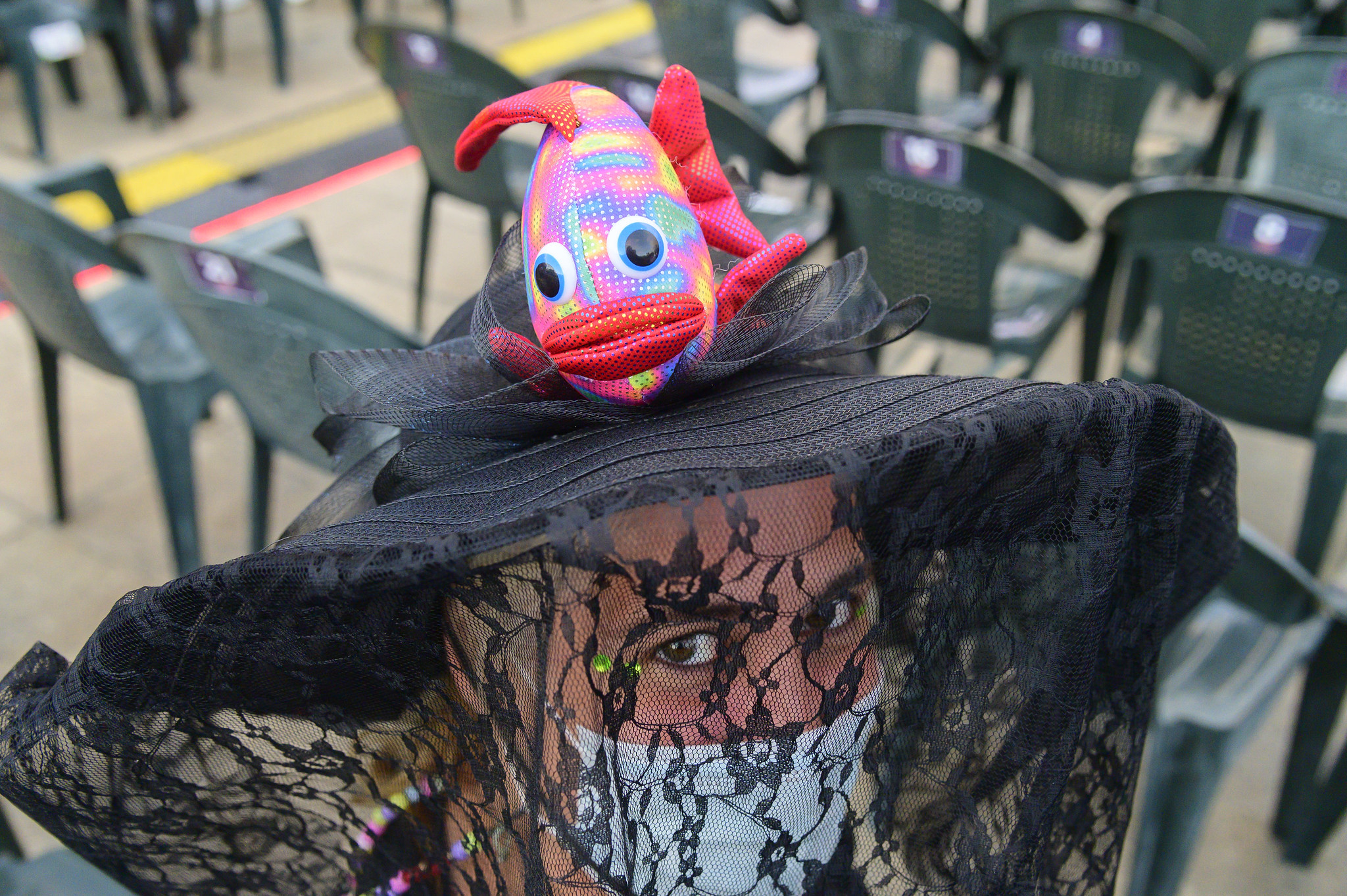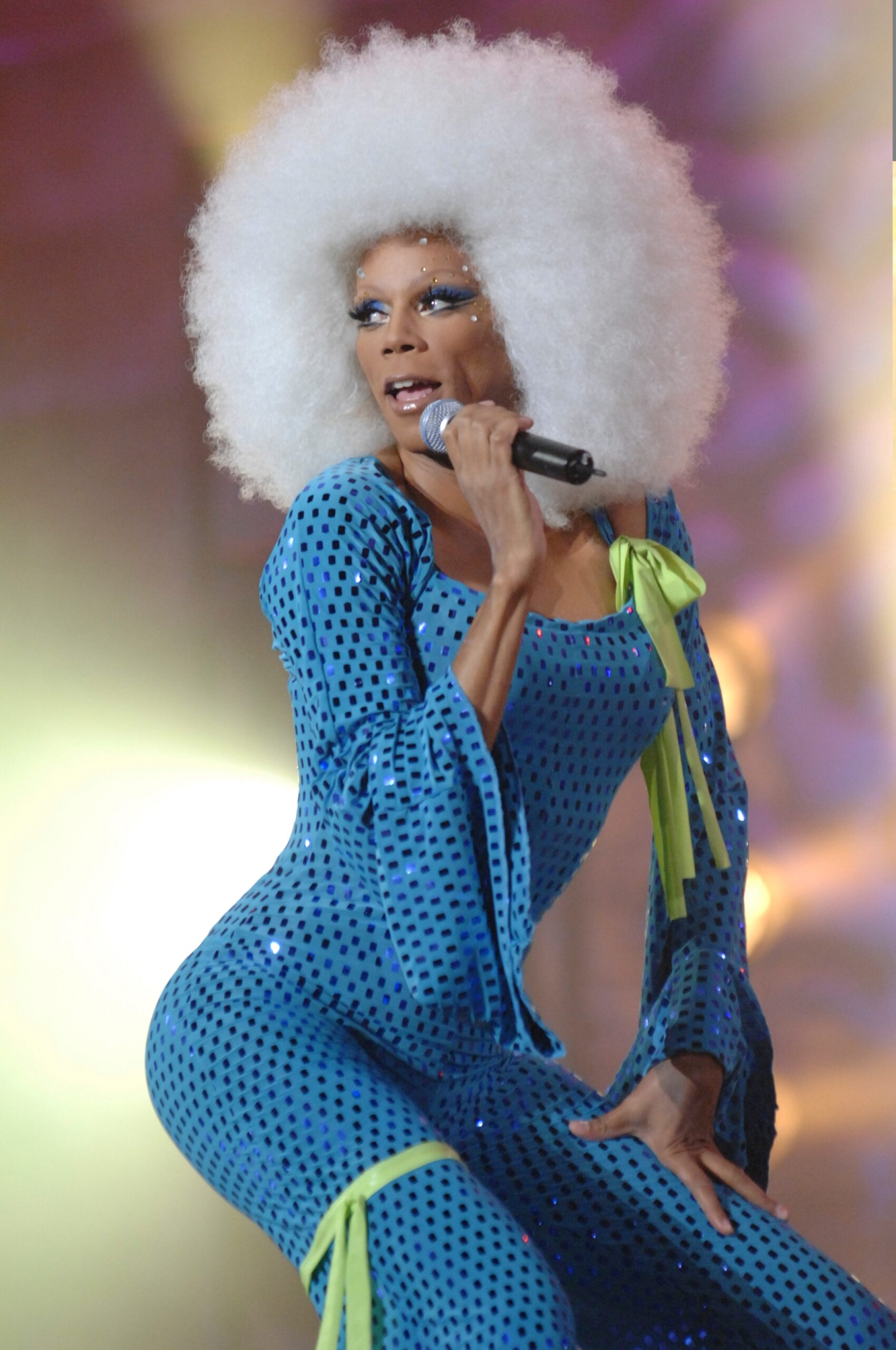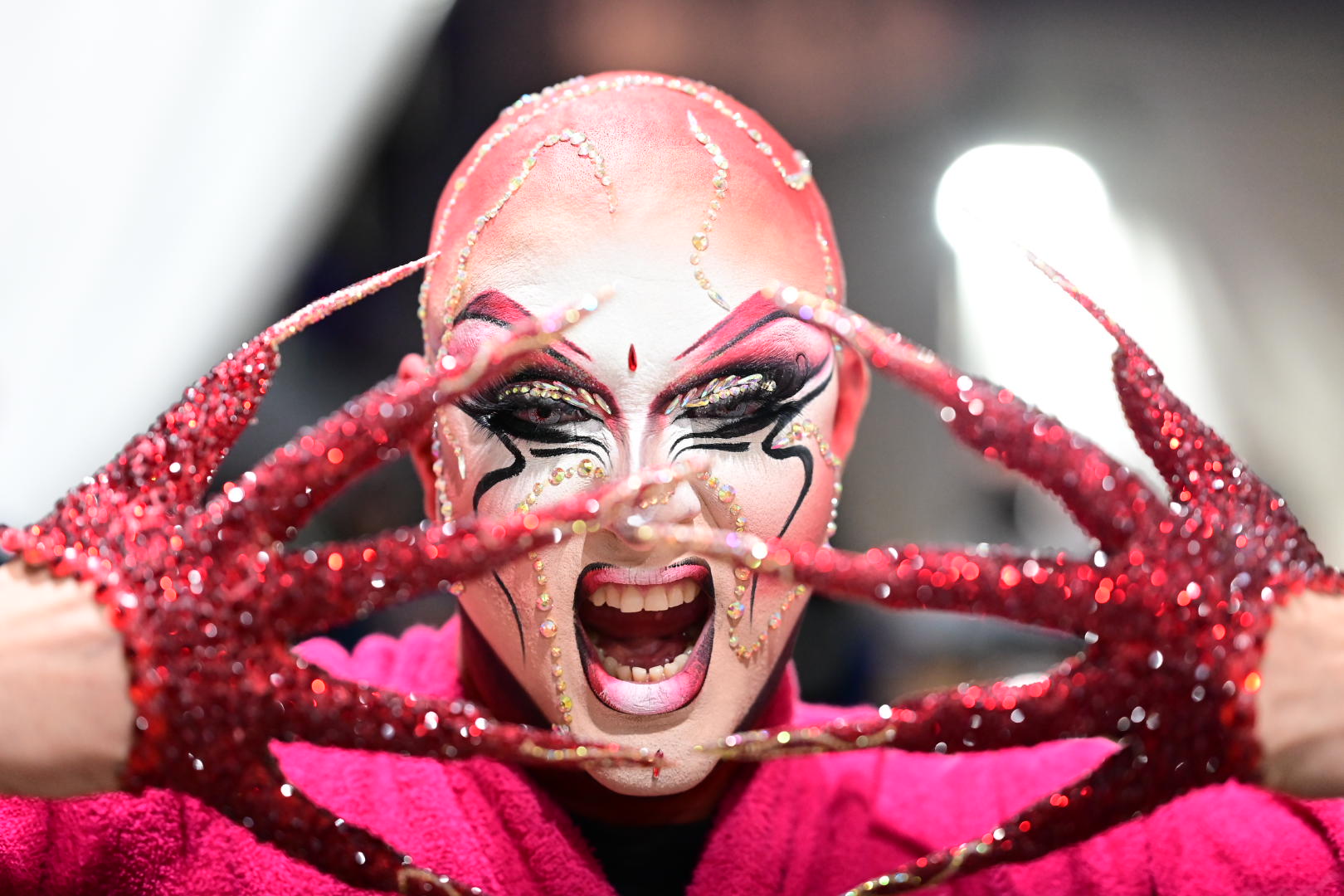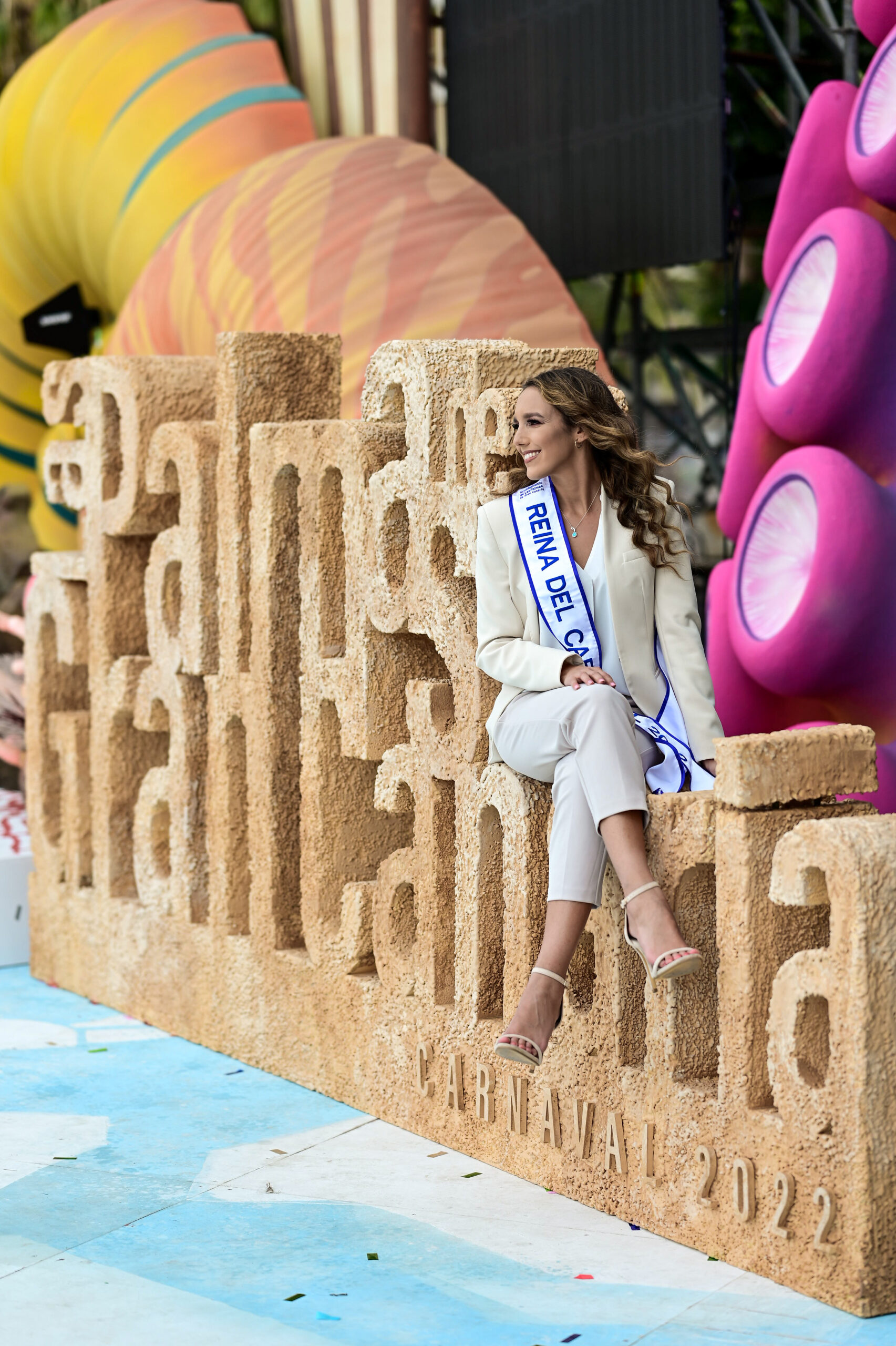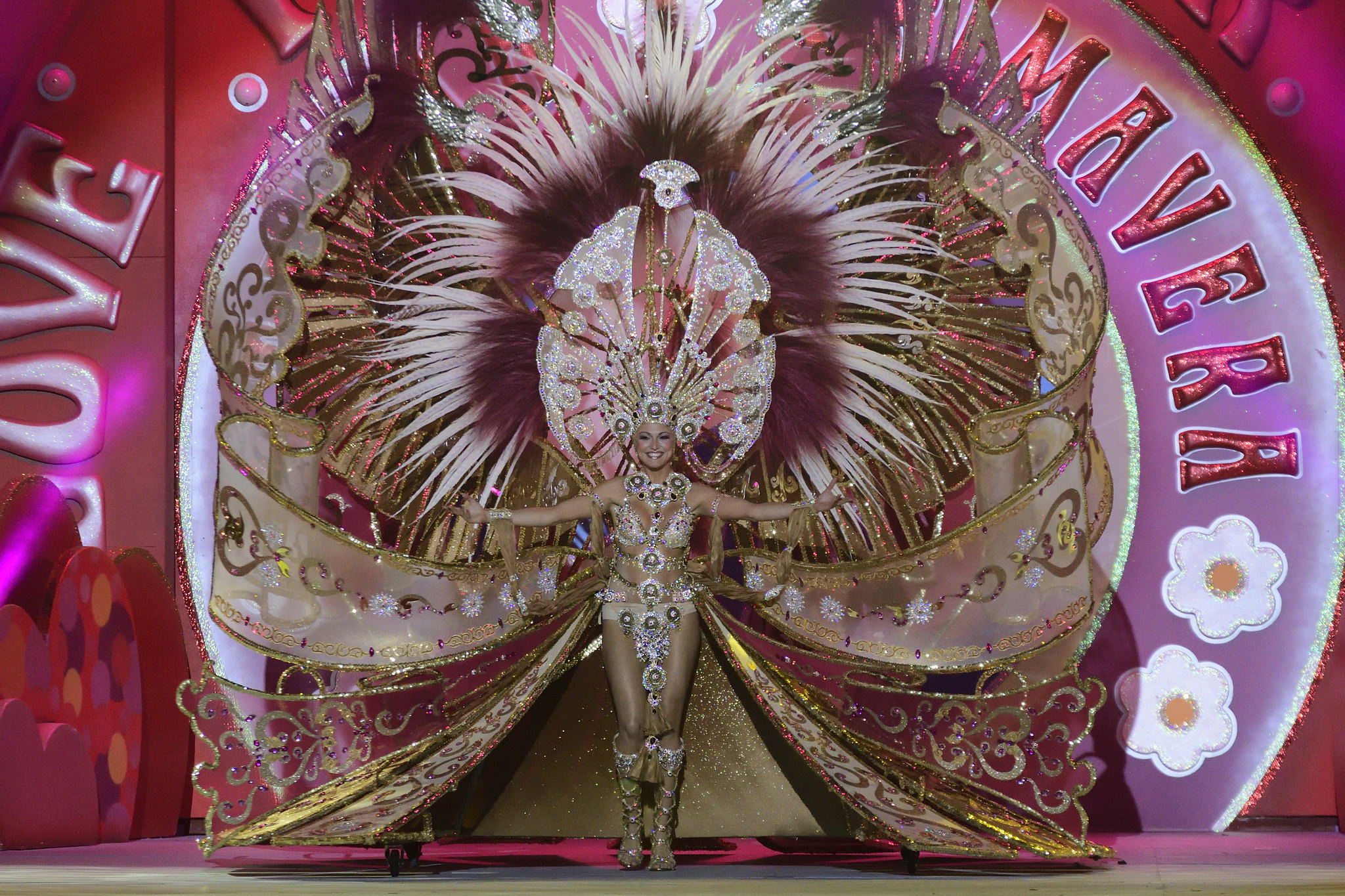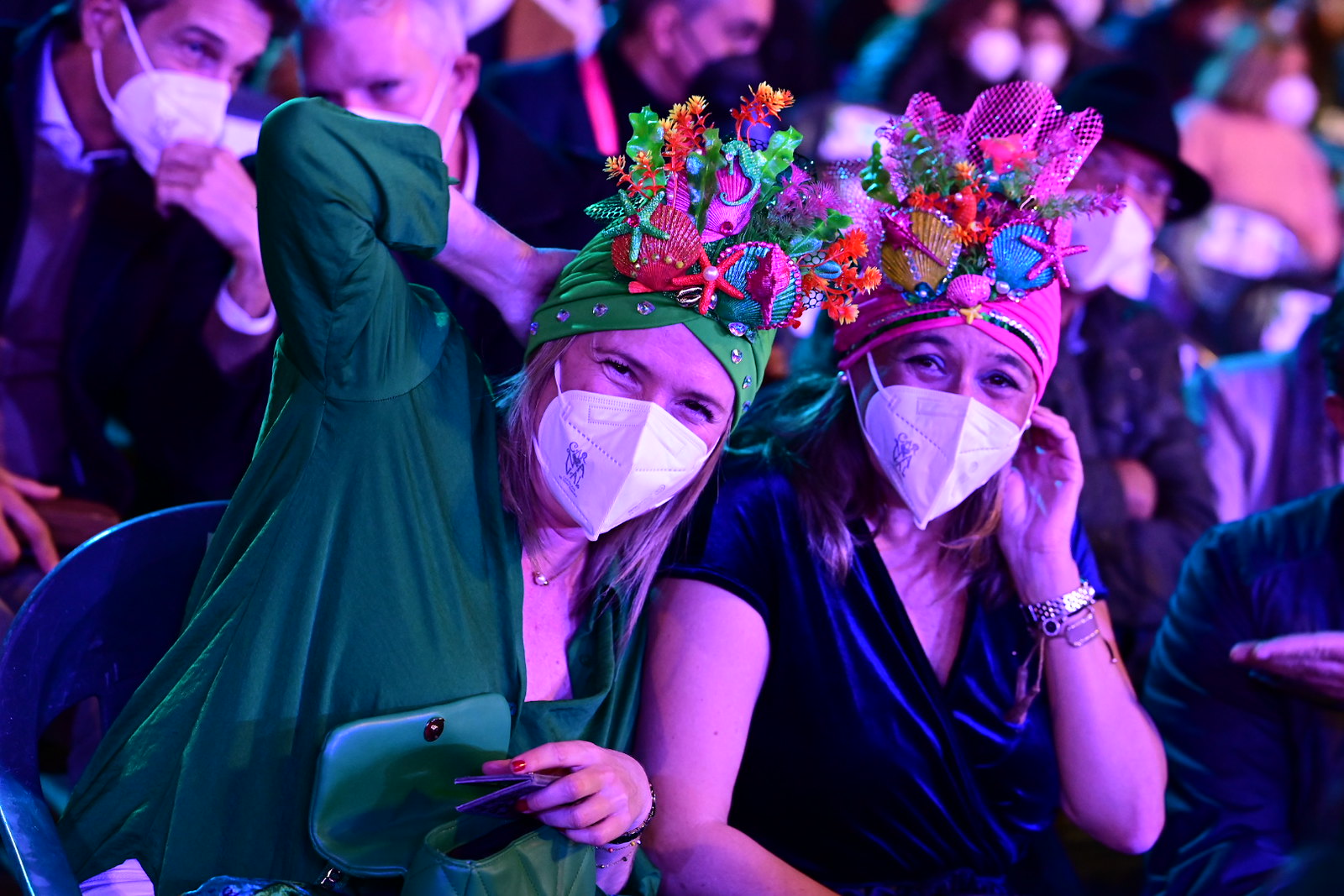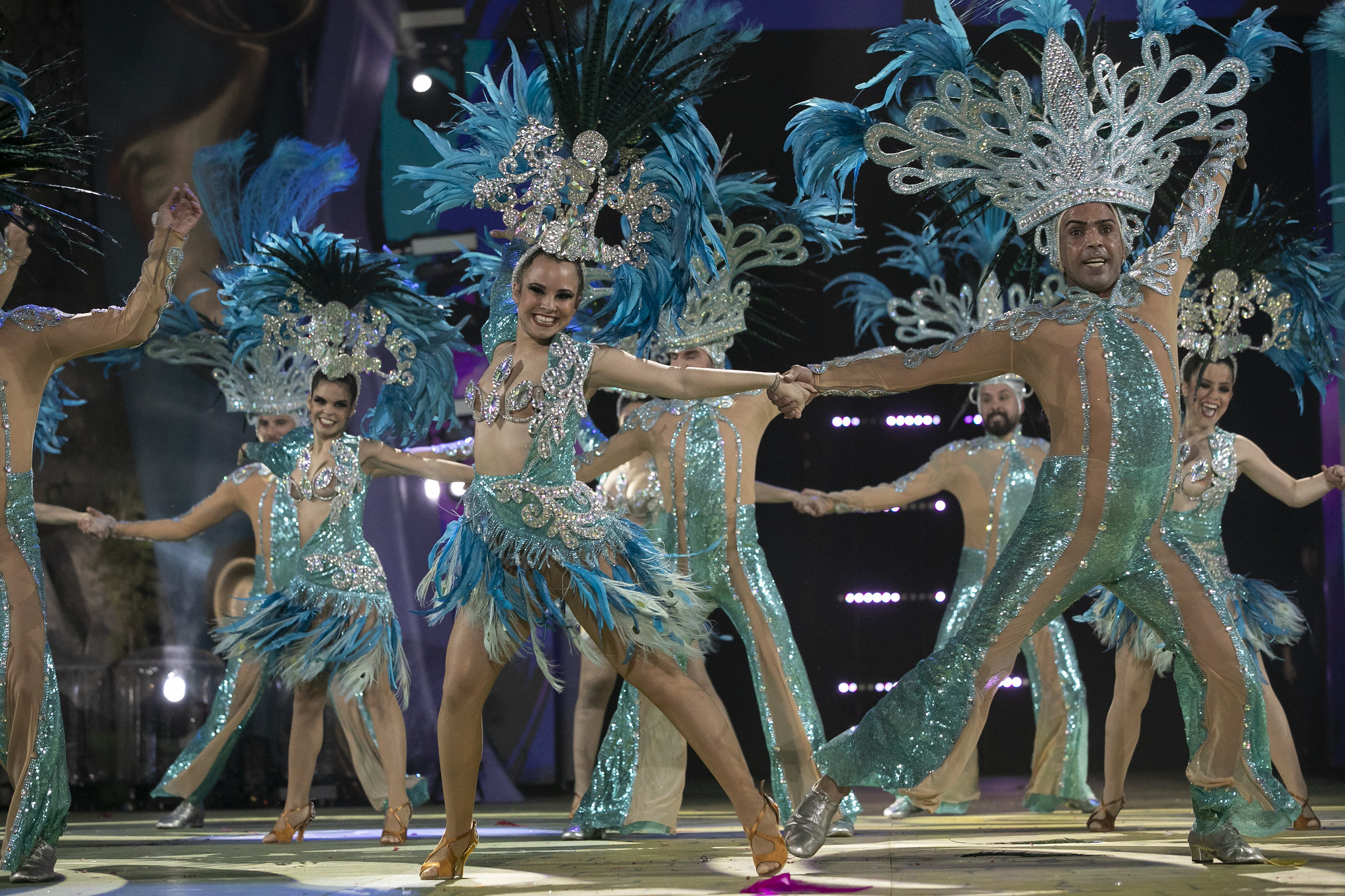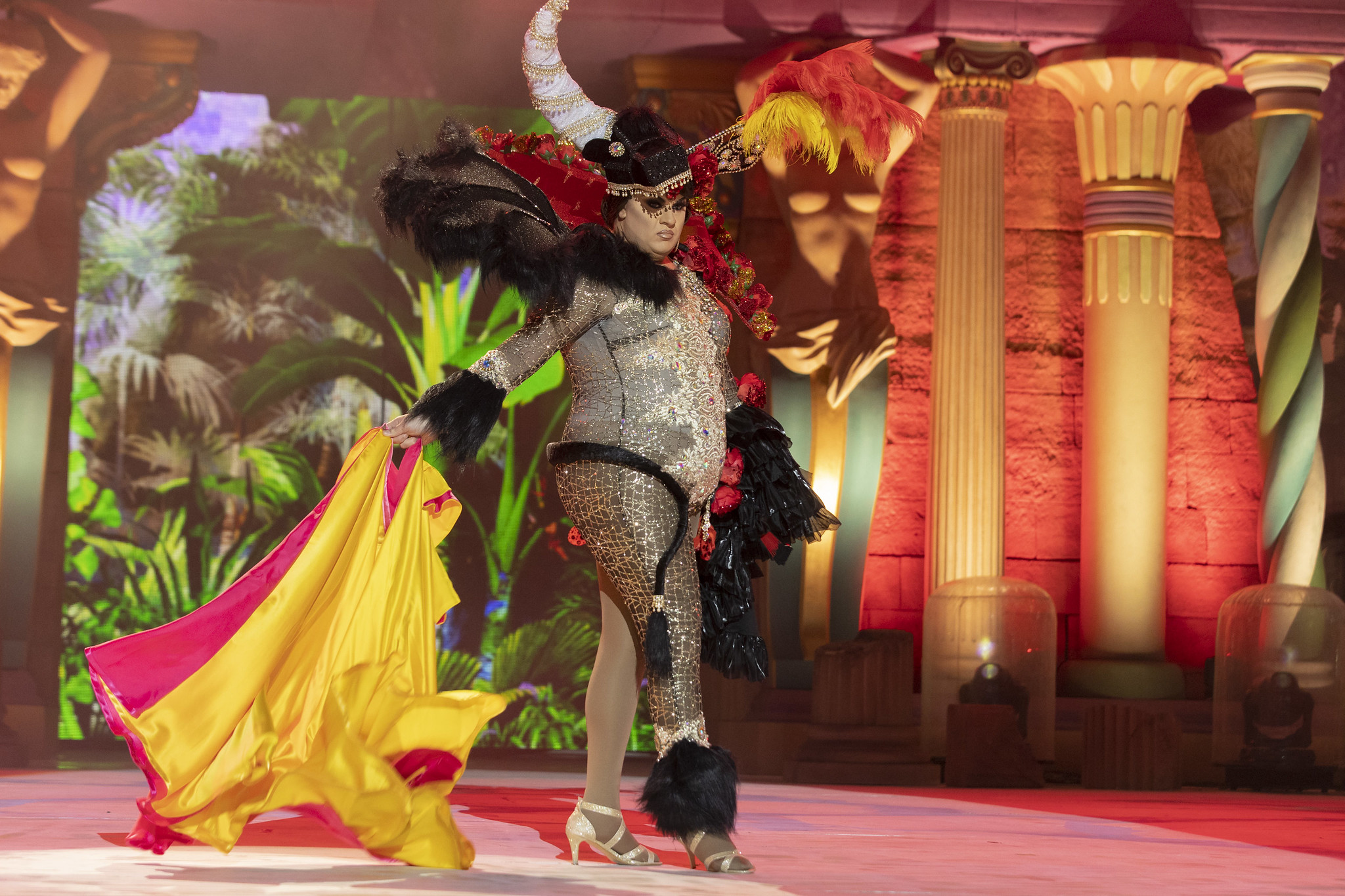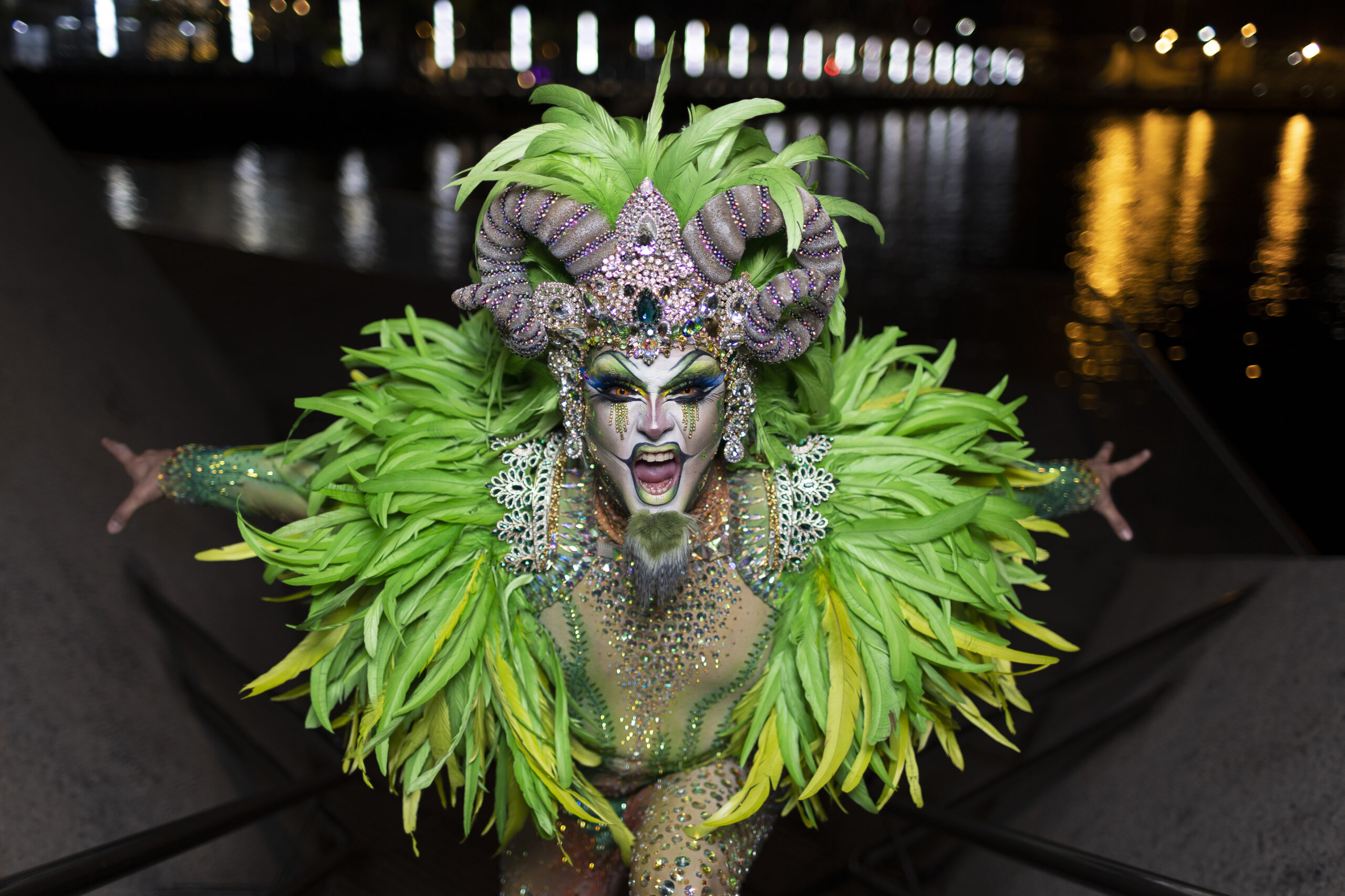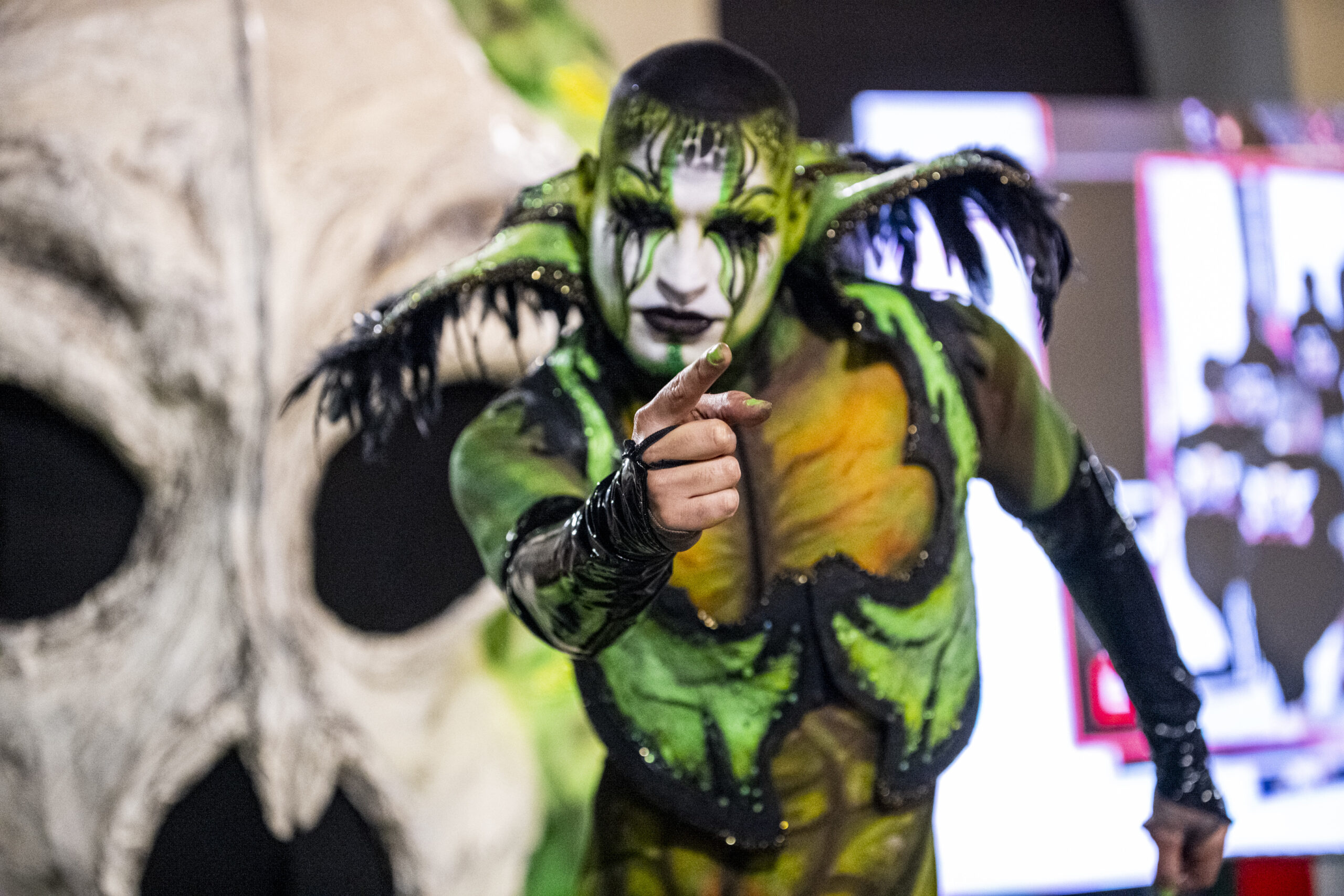The Carnival has a new lease of life in the summer and prepares for next year: in 2023 it will be a great 70s disco
Las Palmas de Gran Canaria, 28 March 2022. On 20 March, Las Palmas de Gran Canaria said farewell to the galas and contests of the “Planet Earth” Carnival, which put the spotlight, through allegory, on the need to preserve the planet. However, for the first time in the history of the Carnival, the festivities will continue in the summer: as a bonus, the organizers have scheduled several days of celebrations on 1, 2 and 3 July — a whole weekend. The object is to make up for the fact that it was impossible to hold the street Carnival in the winter, owing the restrictions imposed because of the pandemic, and to recover the popular spirit of the city’s biggest festival.
On Friday 1 July, the public will be able to enjoy a big parade with all the prizewinners of the Planet Earth Carnival: the Queen, the Grande Dame, the Drag Queen, the Junior Queen, and the award-winning murgas, comparsas and Carnival characters. To round off the Friday, a night of concerts is being prepared.
A foretaste of the Great Carnival Cavalcade is planned for Saturday 2 July, a day when, after more than two years, we aim to recover the major event of the Las Palmas de Gran Canaria street Carnival. This is the great parade of carnival-goers and floats which draws together a large crowd every year in the city’s main arteries.
Finally, on Sunday 3 July the traditional Burial of the Sardine has been scheduled. This is the traditional farewell, a very emotional experience for everyone in the Carnival, accompanying the fish until it is burned on Las Canteras beach. A traditional element of this day is the simulated weeping and wailing of numerous widows who can hardly contain their hysterical grief over the end of the celebrations.
After these historic days, the organizers will get on with carefully preparing next year’s festival. In fact, they have already begun to do so by choosing the theme that will serve as the setting for the 2023 Carnival: “Studio 54”. The representatives of the various sectors involved in the festivities have decided on an allegory that will turn all the events in the coming programme into a great disco from the 1970s.
Ru Paul, the Drag Race and the Las Palmas de Gran Canaria Drag Queen Gala
Las Palmas de Gran Canaria, 14 March 2022. In the Drag Queen world of images, there’s no shortage of clichés or classic references. Some of these, from the last century, such as ‘The Adventures of Priscilla, Queen of the Desert’ (Stephan Elliot, 1994), now occupy a place in the collective world of images. Others, however, are a current phenomenon, and have contributed to bringing the Drag Queen phenomenon into the mainstream. This is the case of RuPaul’s Drag Race, which since 2009 has combined competition and reality television to become a point of reference on the small screen, on the Logo and VH1 channels. All of this, of course, in the hands of Ru Paul, the diva and star whose initiative has increased the impact on audiences even more.
The brainchild has grown and grown, with the extension of the franchise. In 2021, Drag Race España premiered on Atresplayer (with, by the way, a homegrown Drag Queen from the Las Palmas de Gran Canaria Carnival: Drag Vulcano). It’s a talent show with no apparent curbs. But, where was it dreamed up? Well, perhaps if we follow the trail of Ru Paul just before 2009, we might find some interesting information.
In 2008, one year before Drag Race’s explosion on the scene, Ru Paul was performing… in the Las Palmas de Gran Canaria Carnival Drag Queen Gala. Is there a possibility he found inspiration in this contest? Given the combination of the diva’s commercial instinct, the impact on the star of facing Santa Catalina Park, and the emotion that the Gala usually causes in new visitors, it wouldn’t be surprising. So, it’s worth bearing that 2008 show in mind.
For the time being, the connections continue to intertwine: Supremme De Luxe, Drag Race España’s presenter, will also be one of the hosts of the 2022 Las Palmas de Gran Canaria Carnival Drag Queen Gala. These are ties which seem to get tighter and tighter over time.
Photos of Ru Paul in the 2022 Las Palmas de Gran Canaria Drag Queen Gala.
Today's Carnival: the grand date with the Drag Queens
Las Palmas de Gran Canaria, 14 March 2022. The Las Palmas de Gran Canaria Carnival maintains a traditional programme which has developed its character since the festivities were recovered, in 1976, at the end of the Franco dictatorship. Although in this exceptional year street celebrations have not been organised (the popular cavalcades and parades, or the massive open-air concerts), the 2022 Carnival, dedicated to preserving Planet Earth, still has classic events on its calendar such as the Carnival Queen Gala (perhaps its most symbolic), or the Murga and Comparsa contests, as well as the opening proclamation for the festivities (which this year was performed by the popular local group La Trova) or even the Junior Gala.
However, over the years, the festivities have been adapting to the times, incorporating new acts in an ever more comprehensive programme. We would expect nothing less, in a city with the cosmopolitan character of Las Palmas de Gran Canaria. It is no coincidence that the neighbourhood known as the cradle of modern Carnival should be La Isleta: it has developed alongside the important ports, Puerto de La Luz and Puerto de Las Palmas, an entry gate also for culture and outside influences reaching the city, influences which have shaped an open and broad-minded mentality.
Among those novelties there are contests such as the Body Painting Contest (which has now become an international competition) or the Dogs’ Carnival (consolidated over more than a decade’s existence, because the Las Palmas de Gran Canaria Carnival is for all comers). And, above all of these, the Drag Queen Gala, which appeared on the programme with the start of the new century. In the 21st century, the Drag Queen Carnival is the watchword for the festivities in the Gran Canaria capital. On 18 March, we will once more be holding a Gala which is followed all round the world, registering worldwide trending topics year after year and symbolising the very pinnacle of modernity in this Carnival.
This act, which can be taken as the triumph of tolerance, diversity, of the breaching of social mores, of respect and of coexistence, a gala which blurs the borders between genders, which is a major symbol of freedom, and which is followed by millions of people worldwide, is being streamed on the Las Palmas de Gran Canaria Carnival Facebook page and on the Las Palmas de Gran Canaria YouTube channel, in the Las Palmas de Gran Canaria Carnival 2022 playlist.
Photos: Tony Hernández
Daniela Medina Ortega, the Carnival Queen, is a practising doctor in Barcelona
Las Palmas de Gran Canaria, Sunday 13 March 2022. A Graduate in Medicine from the University of Las Palmas de Gran Canaria, Daniela comes from a family which from the very cradle passed on to her its passion for Carnival and for the rigour of studies. So, as the “Earth” Carnival’s leading lady has told us, it wasn’t unusual to see her at the age of four as the flag bearer for the group that, along with Ramón Sánchez, her parents founded: the Río Bamba Comparsa.
She wasn’t able to dance in the Comparsa, because taking her studies so seriously and with such responsibility was incompatible with rehearsing with the groups, but she did take part in anything that didn’t interrupt her studies, such as the fancy dress contests. So, Carnival after Carnival, staying awake right to the end of the Gala which on Friday took her to the Olympus of Queens, she followed the coronation of her sister Silvana as Queen closely, the year that she too was awarded the sash of honour of Junior Queen, 2007. Fifteen years later, it’s Daniela who carries the surnames Medina Ortega once again to the Carnival throne, with a costume which already says a lot about the winner: Embracing a dream is the work of Juan Carlos Armas Febles, who has included, among others, Daniela’s parents in his team; the couple has extensive experience in Carnival and in the design and making of Carnival costumes. Daniela’s mother has been behind many of the renowned Chiara Girls’ wardrobes.
Curiously, this dream is a shared dream because it was Juan Carlos Armas himself who brought Silvana to the throne, and fifteen years later he has managed it again with her little sister.
As Daniela has confessed, the dream starts now, on the day when her reign starts, a reign which she takes as a very close link with her native land, the Canary Islands, and her city, Las Palmas de Gran Canaria. For her, feeling herself to be a part of Carnival and of her island are one and the same thing, quite inseparable. This is why, from the very moment when she heard that the contender sponsored by El Gusto por el Vino and Dormitorum was the new monarch, she grasped the sceptre and the crown with pride and responsibility, in the knowledge that the thing which she so loved to do, spread the love for Carnival among all those around her in the city of Barcelona where she is now settled, practising as a doctor specialising in cosmetic medicine, was now a commitment, since “Carnival is a lifelong experience.”
And the Carnival organisers cannot be more satisfied to have an ambassadress who, as part of her personality and of her principles, assumes the sense of duty and of seriousness. Not only because she has been constant in reaching her goals and achieving the marks which opened the gates of the Faculty of Medicine to her, and afterwards to her Master’s Degree in Cosmetic Medicine and Capillary Surgery, but also because when there was call for it, right in the middle of the outbreak of COVID-19, she became fully involved and made herself available to the most vulnerable groups of society in a city which was hit hard by the pandemic, working with the elderly in Barcelona.
The Queen's moment
The return of the Gala in 2022, after a year under wraps due to the pandemic, is one of the high points in the programme. Choosing the Queen symbolises, more than anything else, the return of Carnival in all its splendour: it’s an event which is also broadcast on television both nationally and internationally, followed with great interest by viewers throughout the country. Not to mention, of course, the expectation generated among the local audience.
Santa Catalina Park, on a stage dedicated this year to the preservation of Planet Earth, will thus once again offer an evening’s entertainment where even the audience’s votes are counted, added to the votes of the various specialist juries. It’s no mean task, to choose the Carnival Queen. Minerva Hernández, the 2020 winner, will hand over her crown and her sceptre to the new monarch. And, we should note, she will do this after the longest reign ever remembered in these festivities: no less than two years, during which, like all her predecessors, she has also taken on the role of ambassadress for the festivities and their representative in the external promotional activities. This is something which is even more important in these latest editions, in which the Carnival is now being organised as a “Fiesta of National Tourist Interest.”
Know who I am, face mask?
Las Palmas de Gran Canaria, 8 March 2022. In the Las Palmas de Gran Canaria Carnival there has been a popular catchphrase since the festivities were officially recovered in 1976, after the Franco dictatorship. Members of the public in costume would greet those who were not dressed up with a classic “Know who I am, mascarita?”, challenging them that way to identify them behind a mask. “Mascaritas” (Masked revellers) was the term that came to be used to refer to people joining in on the festivities dressed up in costume. The heart and soul of the celebration.
This particularly notable edition of Carnival is marked by the safety measures reflecting the evolution of the public health situation: only galas and contests have been scheduled (although that’s no small matter, since they occupy over three weeks of the calendar). But life cannot go on without humour. People have remodelled the catchphrase. So now, at a contest where protection again infection is compulsory, the catchphrase “Know who I am, face mask?” is to be heard.
The fact is that the general public has comfortably taken on board the obligation to wear a face mask inside the enclosure of Santa Catalina Park, where the festivities’ major activities take place. It’s an unusual sight: an audience, in many cases in costume, wearing face masks. And it is also proof of the resilience of a celebration that always survives, despite the obstacles it has come up against along the path of its history.
It is the sign of a safe Carnival, where the organisers have taken the greatest of care to guarantee the proper environment for the galas and contests. Las Palmas de Gran Canaria, a city which in general has been keen to meet the measures imposed by the pandemic, has taken it on board without any fuss. Even before the festivities, and without it being compulsory, many citizens had maintained the face mask wearing habit outside. Today the face mask is also the password for a very special Carnival.
Carnival week for pets
Las Palmas de Gran Canaria, 2 March 2022. The Las Palmas de Gran Canaria Carnival has, for over a decade now, shown itself to be a very special celebration for pets and their owners too. Every year a morning is set aside on the huge Santa Catalina Park stage to hold the Dog Carnival: a unique gala, with the dogs parading alongside their owners in the very heart of the Carnival, dressed up to match the theme assigned to each year’s edition. And on this occasion, the programme is dedicated to the conservation of Planet Earth. Could there be a more appropriate event for such a special edition of Carnival? The event will be on Sunday, 6 March, at 12 pm.
Before this, the big contests for the Carnival groups will take place, from Wednesday until Saturday. These are the Murga and Comparsa group contests; these groups, despite having had a year which made it difficult to rehearse and prepare their appearance on stage, won’t miss their big date with the Las Palmas de Gran Canaria Carnival.
So, ten Murga groups will be competing with their songs. These are the Carnival nights when these groups come out on stage dressed up in their costumes, their ingenuity and the back-up of all their preparation, to sing with great humour about the major current local and worldwide issues. The first two rounds are held on 2 and 3 March, and the grand finale, on Saturday, 5 March.
On Friday, 4 March, it’s the turn of the Comparsa contest; these groups are the very spirit of Carnival at its most musical, and they too have a long history in the city’s most important festivities.
But we mustn’t forget that the week can’t go by without celebrating the Junior Gala: young contenders parade in wonderfully detailed costumes, to delight an audience which always gives the participants all its support.
We should remind everyone that all these events are programmed with full consideration for the safety measures in place which reflect the evolution of the state of affairs healthwise, bearing in mind that greater precaution is called for in these times. Carnival adapts to survive too!
Carnival is for every age group
The first weekend of Earth Carnival (the 2022 Las Palmas de Gran Canaria Carnival) has once more been witness to the eruption of festivities in the city. Although always under conditions determined by the current health situation, the programme has got off to a strong start, with the Santa Catalina Park and its huge stage as a safe epicentre for the celebration of the main galas and contests. Not for nothing have the citizens of Las Palmas been waiting for two years to be able to experience that festive spirit once more. Or at least, its major shows.
After the popular local group La Trova performed the opening proclamation announcing the start of the Carnival, on Friday 25 February, the schedule moved on to important entries in this edition dedicated to the conservation of Planet Earth. The first event, on Saturday 26 February, was the draw to decide on the order of participation in the galas. For the Grand Carnival Queen Gala and the Drag Queen Gala, of course. But also for the Grand Dame Gala, held on Sunday 27 February, and the Junior Gala.
So, on the same stage and in front of a live audience, there were parades of drag queens, contenders for the junior crown, veteran candidates for the Grand Dame prize and young women aspiring to the great Carnival Queen's crown. They shared the limelight. The picture reflects the true spirit of the festivities in the city: Earth Carnival is, it's clear, a Carnival for everybody in Las Palmas de Gran Canaria
The fancy dress contest which then took place on that same Saturday reflected what fans of Carnival the participants in the individual and group categories are: they love to dress up and to party, despite having less time this year to prepare for their appearance on stage.
On Sunday 27, the morning before the Grand Dame Gala, Santa Catalina Park hosted a junior encounter which confirmed that the Carnival has plenty of young blood: Murga groups with very young members and Comparsas of the same age displayed a passion for the event that has been running through their veins since the cradle. And that will continue to run throughout their lives, as the contenders for the Grand Dame crown showed that night.
A Carnival of Resilience for Planet Earth
The Las Palmas de Gran Canaria Carnival stands firm in a crisis, and this year, 2022, it emerges as a different kind of celebration: despite the restrictions imposed by the health crisis, the organizers have put together a wide-ranging programme of events in Santa Catalina Park, the heart of the festival. There, from 25 February, on a stage dedicated to the planet and with a message of working together to preserve it, murgas and comparsas will compete and drag queens and candidates for the festival throne will parade. There will also be events for families and for the youngest members of the audience, as well as the spectacular body painting contest and the Dog Carnival.
In a year when we needed to prepare a safe Carnival, with limited capacity and stringent safety measures associated with the health crisis, Santa Catalina stands as a true monument to the spirit of the celebrations. The theme chosen by the audience in 2022 is the planet and its conservation: this conveys a universal message, which will set the scene for the costumes of the groups and the candidates for the crowns, male as well as female .
None of the usual contests will be missing from the programme. There won’t be any mass concerts or street parties to accompany these galas and contests, but that’s not what really matters. As a “Fiesta of National Tourist Interest”, and a candidate for recognition as a “Fiesta of International Tourist Interest”, the Las Palmas de Gran Canaria Carnival confirms its position as an expression of the popular spirit, resilient in the face of difficulties and ever optimistic, with a big smile behind the costumes.
Dates to remember
The festival gets underway on 25 February, with the official announcement, and remains at fever pitch for ten straight days in Santa Catalina, with the fancy dress, murgas and comparsas contests, as well as the galas to decide the Junior crown and the Grande Dame. Then come the most iconic events: the Carnival Queen Gala on 11 March and the Drag Queen Gala on 18 March. Just two days later we celebrate the symbolic Burial of the Sardine, the final act of a different kind of festival, affected by circumstances but still going strong after 2021, a year marked by COVID-19.
Tickets for the Carnaval galas and the final stage of the Murgas Contest are going on sale; free tickets have also been activated
Las Palmas de Gran Canaria, Monday 21 February 2022. On last Friday, 18 February, the Las Palmas de Gran Canaria Carnival made tickets available to the general public for the first scheduled acts, and from now on, ticket requests are being activated gradually for the rest of the programme’s free events, as well as for the four scheduled events with priced tickets: the Carnival Queen Gala and the Murga Contest Final, with tickets on sale next Friday, 25 February, at €10 and €5 respectively; the Drag Queen Preselection, with tickets available at €10, on Wednesday, 2 March; and for the Drag Queen Gala for which sales will be activated on 8 March, at €15 per seat.
Entrees.es, the link accessible from lpacarnaval.com, will activate ticket requests on the dates indicated by the organising committee and, with a few exceptions, this will always be at 8 am (GMT+0). In all cases, ticket requests will be limited to a maximum of four per person.
For the free events, both the Carnival website and the ticketing platform will stagger the opening of ticket requests. So, reservation opportunities for the Opening, the Fancy Dress Contest, the Children’s Groups Event and the Grand Dame Gala, the four events scheduled for the first weekend of the fiestas, began on Friday 18 February. Availability of tickets for the presentation of contenders for the throne of this Carnival dedicated to “Earth”, due to the relocation of the catwalk and the draw for order of participation, was postponed to Monday, 21 February. On the same day, the organisation committee activated requests for places in the Body Painting Contest and the two rounds of the Murga Contest.
From now on, the staggered issue plan has the following dates for the issue of free tickets: Wednesday 23 February, in this case at 12 pm (GMT +0), for Pedro Daktari Night, and the exhibition of batucada dance and the concert which will take place on the morning of Carnival Tuesday; on Friday 25 February, coinciding with the start of ticket requests for the Comparsa Contest, The Dog Carnival, and the Children’s Gala; ticket reservation for the family concert and the Chirimurgas Night will begin on Friday 4 March; entry passes for the concert “Te regalo una rosa”, in tribute to Juan Luis Guerra, will be available from 11 March, as well as for the Murgas Marathon and the Fiesta Farewell acts which will make references to the “sardine funeral” ceremony in a year when the fish itself will not be able to parade through the city’s streets.

